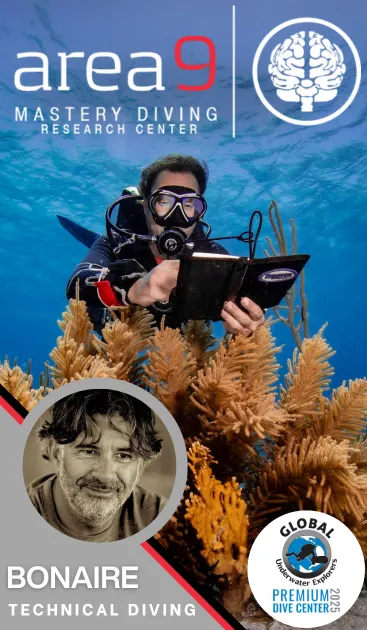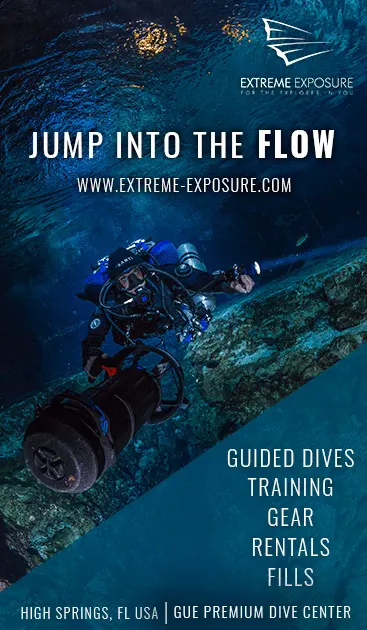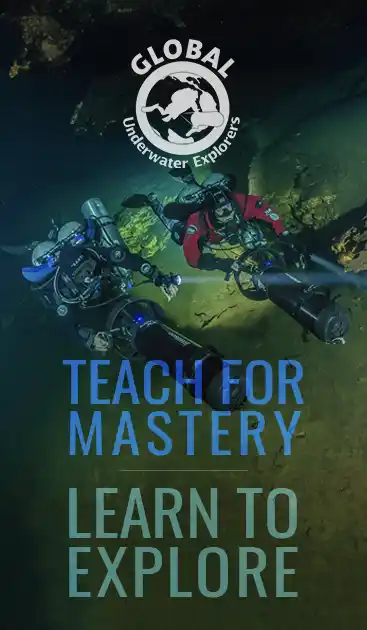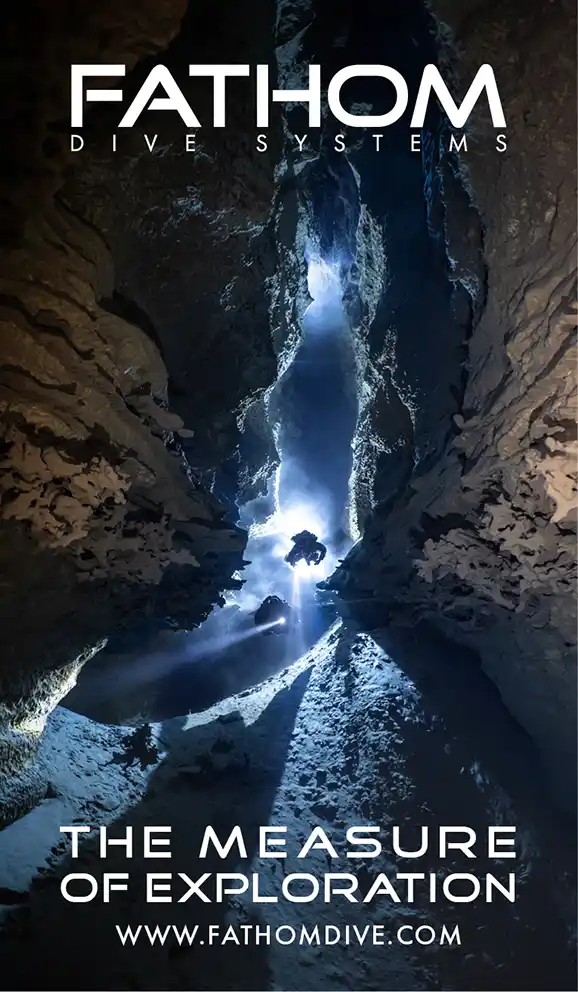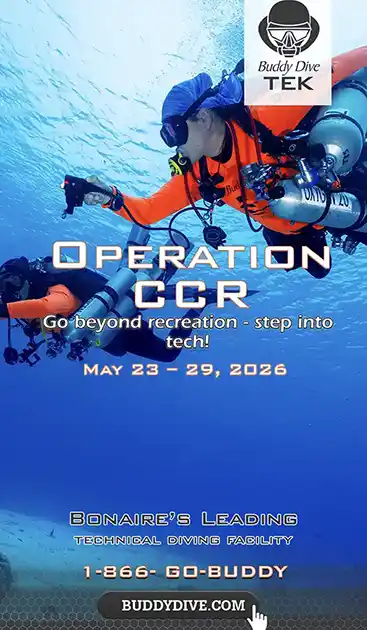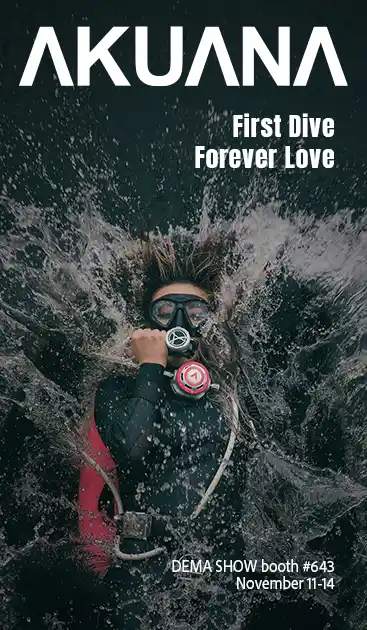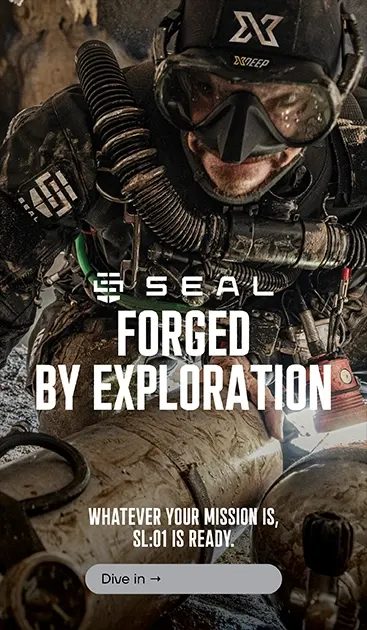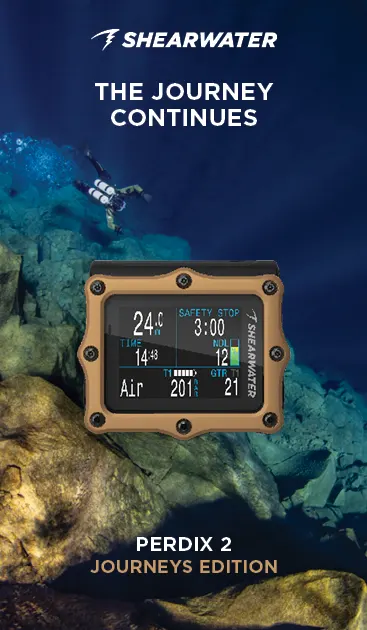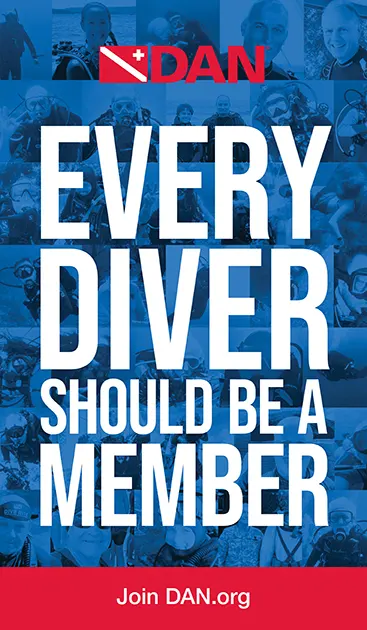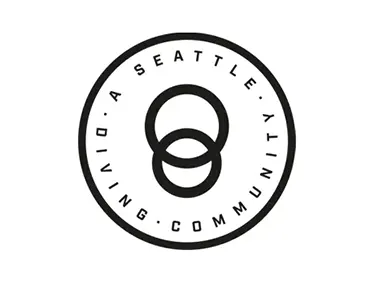Uncategorized
PFI’s Technical Freediving Specialty Course
By Kirk Krack. Pictures courtesy of Performance Freediving International (PFI)

I designed the PFI Technical Freediving Specialty Course for certified Intermediate Freedivers or equivalent looking to enhance their performance and safety using surface-supplied oxygen and Nitrox mixtures. It bridges the gap between elite breath-hold performance and technical applications such as safety diving, film production, spearfishing, and expeditionary diving, to name a few.
Technical freediving leverages oxygen-enriched gases during surface recovery to reduce decompression stress, improve recovery time, and enable longer bottom times—all while increasing the safety margin for both performance and support divers. It is especially beneficial in scenarios involving repeated deep dives or challenging underwater environments when used conservatively, not accelerating surface intervals when using 80% or using equivalent air depth calculations when on low mixes.
The course is taught by certified PFI Technical Freediver Instructors who are also PFI Intermediate Freediver Instructors and who meet specialized technical training requirements. It includes academic instruction, equipment workshops, optional confined water training, and a minimum of two open water sessions where full protocols are put into use. Student-to-instructor ratios range are maximum 6:1 depending on the environment and available support with a maximum of three students per technical freediving support system.

Prerequisites include:
- PFI Intermediate Freediver certification (or equivalent)
- Minimum age of 18
The course requires careful planning around gas selection, surface interval calculations, and the application of oxygen protocols. Students work with both high and low Nitrox mixtures—typically 80% and 32%—for post-dive recovery and pre-dive preparation. Training includes procedures for dive and gas planning, gas switching, equipment use, and emergency management.
Core topics include:
- Physiology (oxygen toxicity, hypoxia, hyperoxia, hypercapnia and CO2 narcosis, decompression stress, and DCI)
- Scuba and breath-hold implications: pressure and volume hazards
- Understand maximum operating depths (MOD) and “best mix” calculations
- Dive planning, gas selection, analyzing, and labelling
- Equipment handling for O2 serviced configuration
- Safety and support protocols
- Use of tools like oxygen analyzers and freedive computers
Students must demonstrate mastery through workshops: static apnea using high O₂ mixes in dry or confined water and open water dives incorporating both high and low mix usage.
Upon successful completion of knowledge evaluations and in-water sessions, students receive a PFI Technical Freediver Certification.

Advantages and Risks of Technical Freediving
Breathing elevated oxygen mixtures offers several benefits:
- Faster post-dive recovery
- Increased margin of safety against DCI if not used to accelerate surface intervals
- Enhanced breath-hold comfort and time
- Reduced decompression stress
- Shorter surface intervals when high mixes are used effectively
- Flying after freediving safety margins
However, there are inherent risks:
- Nitrox mixes above 40% require oxygen-cleaned equipment to reduce fire hazards.
- Using high oxygen mixtures too deep can cause CNS oxygen toxicity.
- CO₂ narcosis can occur during extended static apneas with subsequent effects of high CO2 lasting several hours.
- Mishandling or misidentification of gas mixtures could result in serious accidents.
- Compressed gas use at depth can cause lung expansion injuries for untrained individuals.
As with all forms of diving, proper training and risk mitigation are essential. When using Nitrox to supplement air protocols without changing the freedive methodology, all breath-up and dive procedures should remain consistent with traditional freediving.

Gas selection strategies:
- Simple: Using a single, commonly available Nitrox mix (e.g., 32%) that does not require specialized gear
- Advanced: Using both high and low mixes (e.g., 32% and 80%), which involves gas switching and requires oxygen-cleaned equipment and precise coordination
Typical mixes include:
- 32% Nitrox – Standard, available at most dive shops, suitable for dives to 40 m/131 ft
- 50% Nitrox – Good for shallower dives (≤20 m/66 ft), offers excellent recovery benefits
- 80% Nitrox or higher – Ideal for surface-only post-dive use, dramatically reduces recovery time and allows for more dives per session

Understanding partial pressure of oxygen (PPO₂) and the time/dose relationship is critical. NOAA exposure tables serve as a reference, but freedivers differ from scuba divers in lung volume usage and exposure time. Freedivers, using a single breath, may reach high partial pressures momentarily, whereas scuba divers face prolonged exposure. So even though the “pressure” may be the same, the total load is significantly decreased for the freediver.
However, the established partial pressure of 1.6 ATA PO2 (for example: 100% oxygen at 6 m or 1.6 ATA or 40% oxygen used at 40 m or 5 ATA) has been the maximum exposure benchmark in technical scuba diving. Without further evidence and out of caution, when using elevated oxygen mixtures, we also use this to determine the “best mix” for a certain depth or the maximum operating depth a certain mix can be used.

Central Nervous System Oxygen Toxicity is the most immediate concern specific to technical freediving. Used beyond a certain time and at specific doses, oxygen can cause convulsions, visual disturbances, auditory hallucinations, nausea, twitching, irritability (anxiety), and dizziness. The most serious consequence is a convulsion and the inability to protect one’s airway or maintain safe buoyancy.

There is one aspect that draws my concern: In competitions, athletes sometimes use oxygen on scuba unsupervised at depths of 6 m and more without proper awareness or safety equipment in place while hanging over incredible depths. Because of these risks, PFI promotes surface use with untrained athletes under supervision. The perceived gain of depth isn’t worth the risk, and competition organizers put themselves at risk allowing this, in my opinion. Can it be done safely? Of course. But everyone needs to know the proper procedures, understand the risks, and use the proper equipment—therefore, be trained.
Whole Body Oxygen Toxicity, although a problem for technical scuba divers in that the dose of oxygen over long durations can cause lung irritation and worse symptoms, it isn’t a problem for the average technical freediver when using proper protocols and surface oxygen for recovery versus oxygen at depth.
CO2 Narcosis becomes a risk where extended static breath-holds using oxygen are concerned. The changes in blood pH can cause different cardiac rhythms. Again, recovery can take longer, and affects such as shakes and trembling can be felt for hours afterward.
Return to: Technical Freediving is Re-emerging as the Cutting Edge of Diving

Kirk Krack is a leader in the field of diving, with over three and a half decades of experience. A multi-disciplined diver, he began his professional diving career in 1988 in Canada. By the mid-1990s, he had specialized in mixed-gas technical diving, operating at depths up to 170m (550ft), and ran a successful diving business in the Cayman Islands.
In January 2000, Kirk founded Performance Freediving International (PFI), creating the world’s first comprehensive instructional system for freediving. Through PFI, he trained seven athletes to achieve a combined 23 world records. He also developed the Advanced Freediving Research Program at Simon Fraser University and co-authored multiple scientific papers. Kirk pioneered Technical Freediving, introducing innovative protocols that utilize varying oxygenated gas mixtures.
As an innovator, Kirk developed the first Breath-Hold Survival Program, which later evolved into Breath-Hold Special Operations—a program currently used by nine different special operations groups across three countries. He was awarded the DAN Rolex Diver of the Year in 2016 for his contributions to freedving safety.
Kirk also serves as a Performance Advisor with Liminal Collective, a global leader in human performance, working with corporations, elite teams, and athletes. His expertise has extended to the film industry: he was part of the Academy Award-winning team for the documentaries The Cove and Racing Extinction, produced by the Oceanic Preservation Society (OPS). He also trained Tom Cruise and Rebecca Ferguson for Mission Impossible: Rogue Nation, Margot Robbie forSuicide Squad, and was personally selected by James Cameron to train the cast and crew of Avatar: The Way of Water.
Currently, Kirk works with DEEP Research Labs and the DEEP Institute as Human Performance Diver Lead, focusing on developing the concept of the “multi-disciplined human performance diver.” In addition to this role, he contributes to business development and strategic relations.















